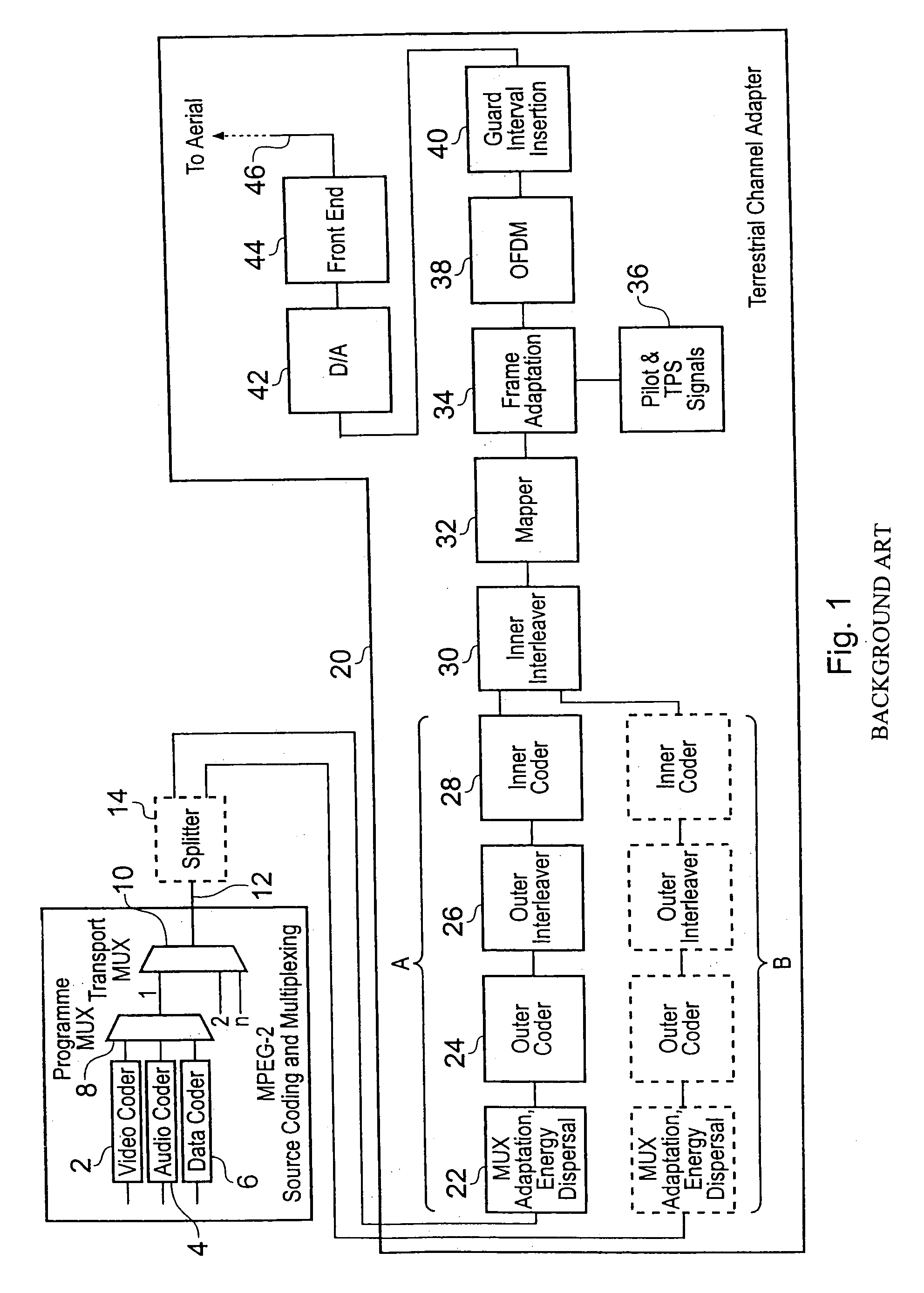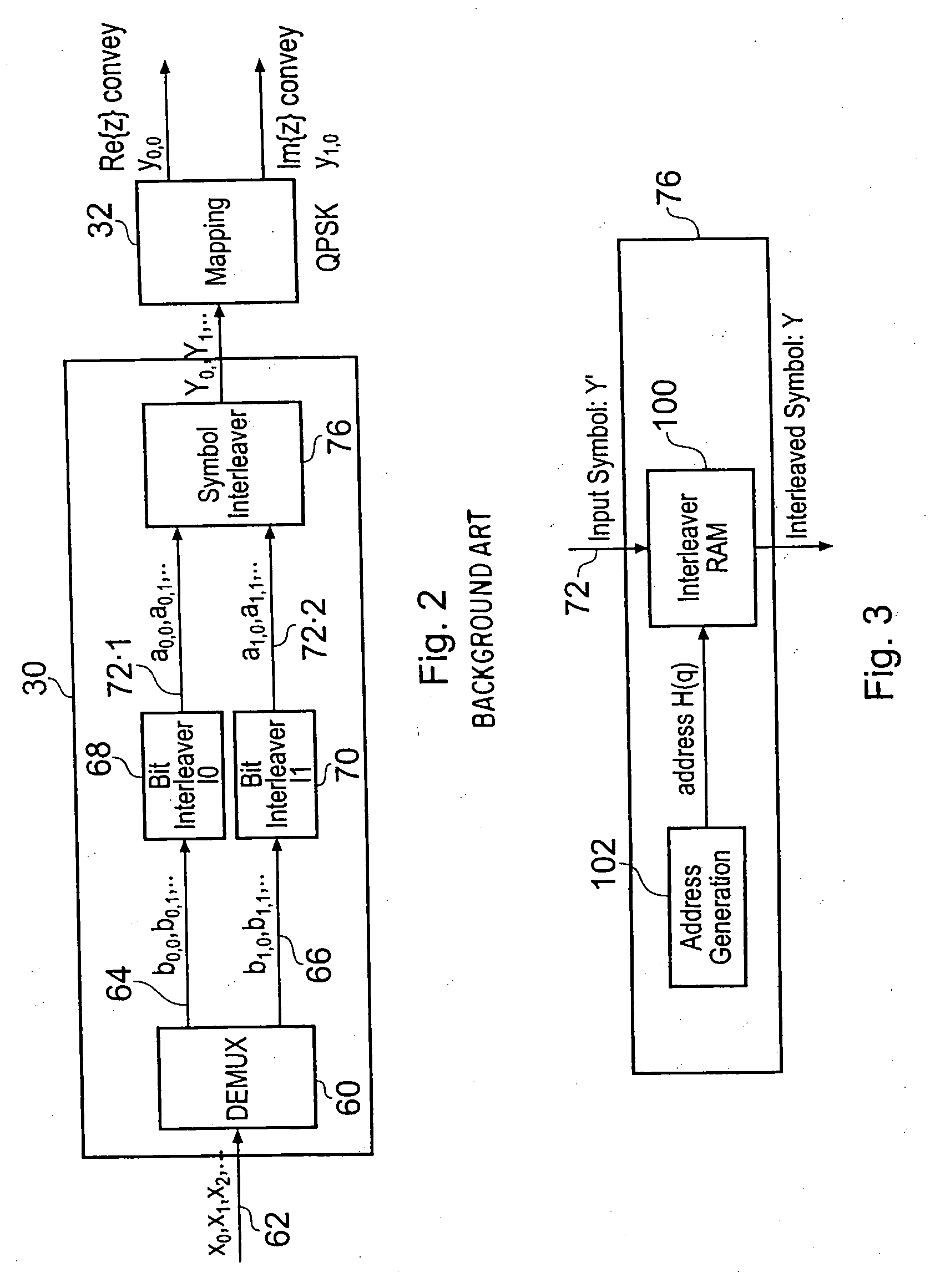Data processing apparatus and method
- Summary
- Abstract
- Description
- Claims
- Application Information
AI Technical Summary
Benefits of technology
Problems solved by technology
Method used
Image
Examples
Embodiment Construction
[0025]The existing OFDM-based DVB-T standard is composed of a 2 k and an 8 k mode, which means that the bandwidth used to transmit the signal is divided into either 2048 sub-carriers (2 k mode) or 8192 (8 k mode). The 2 k mode presents some interesting features with respect to mobility. In effect, the short symbol time of this mode allows good doppler performance in mobile environments. On the other hand, the 8 k mode gives the possibility to network planners to build a sparse, hence cheap, SFNs (Single Frequency Network). The investigations carried out on the subject showed that the introduction of a 4 k mode would be a good trade-off between these two modes. It would give reasonably good reception for mobile users even at high driving speeds, without the need for a complicated and costly ICI (Inter Carrier Interference) cancellation scheme. It would also help to keep the cost of the network to a reasonable level. This document describes a new symbol interleaver for this 4 k mode.
[...
PUM
 Login to View More
Login to View More Abstract
Description
Claims
Application Information
 Login to View More
Login to View More - R&D
- Intellectual Property
- Life Sciences
- Materials
- Tech Scout
- Unparalleled Data Quality
- Higher Quality Content
- 60% Fewer Hallucinations
Browse by: Latest US Patents, China's latest patents, Technical Efficacy Thesaurus, Application Domain, Technology Topic, Popular Technical Reports.
© 2025 PatSnap. All rights reserved.Legal|Privacy policy|Modern Slavery Act Transparency Statement|Sitemap|About US| Contact US: help@patsnap.com



